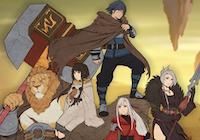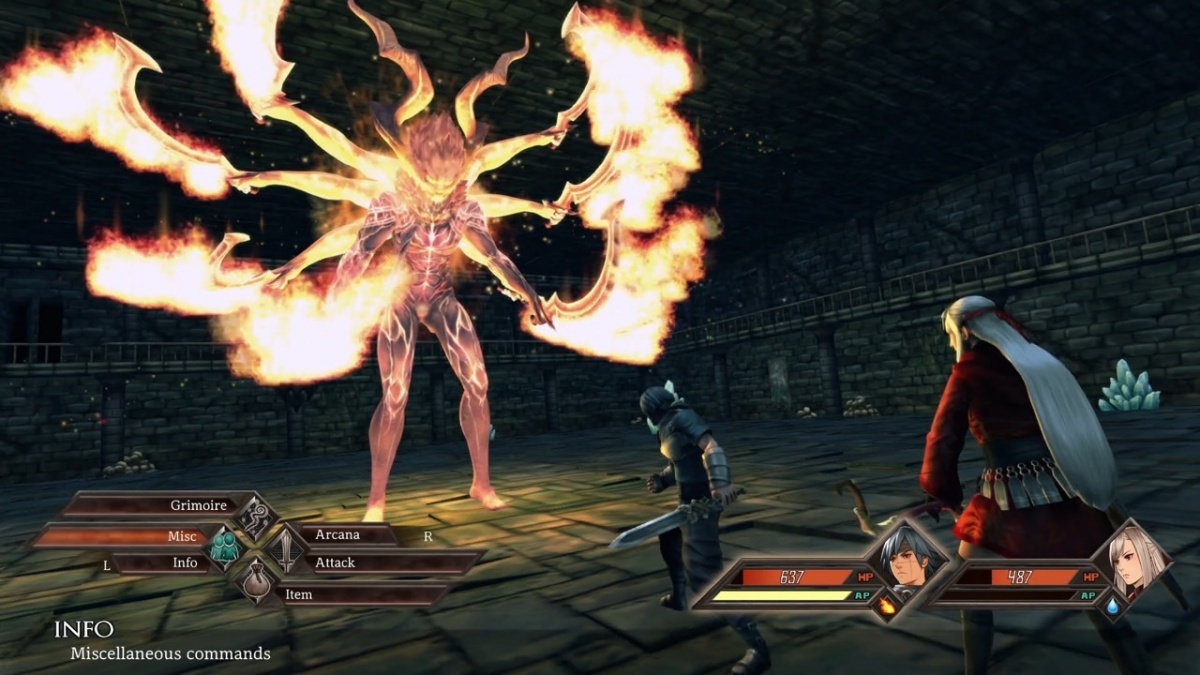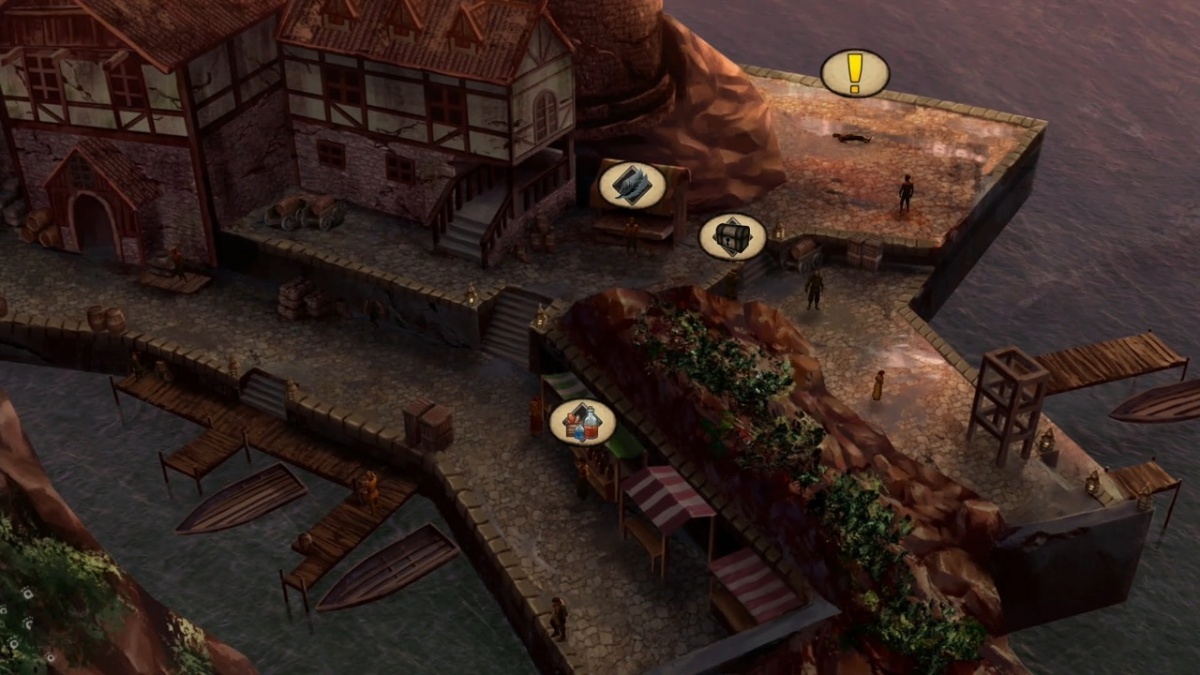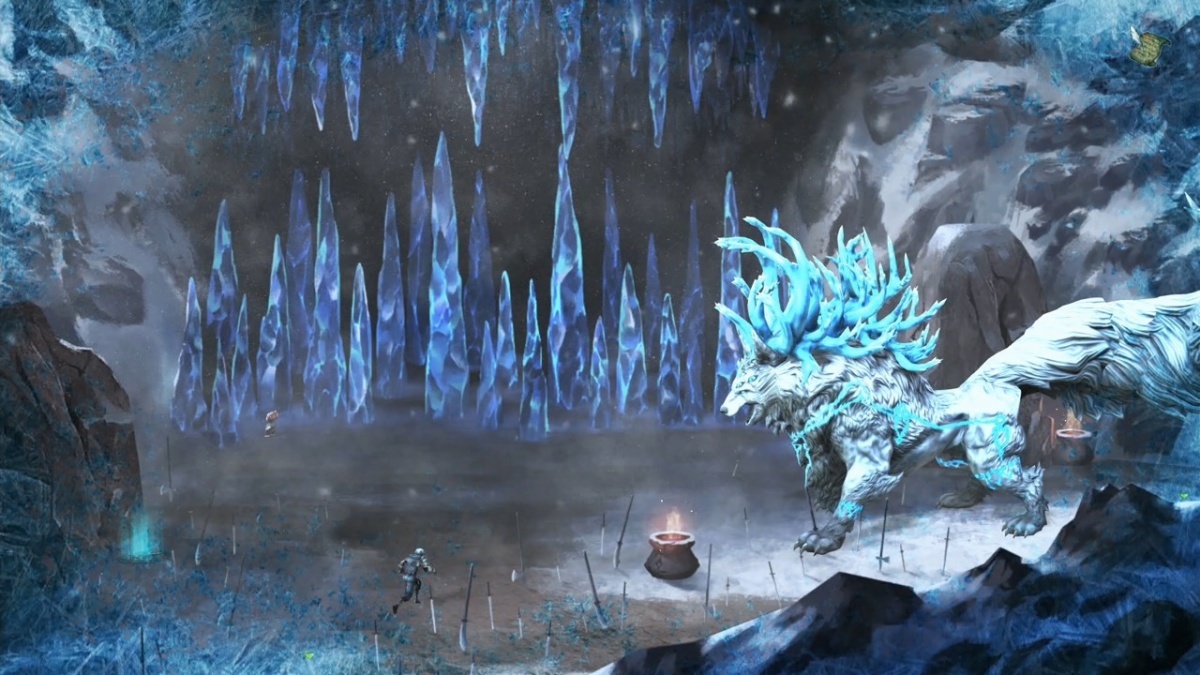Legrand Legacy: Tale of the Fatebounds (Nintendo Switch) Review
By Rudy Lavaux  08.04.2019
08.04.2019

Legrand Legacy: Tale of the Fatebounds is a Role Playing Game meant as a, quote on quote, "nostalgic love letter to classic JRPGs," in particular to those of the 32-bit era of gaming. That is to say mainly the PS1, since that console reigned supreme in those days as far as the JRPG genre was concerned. It took two years to complete its development for PC, encompassing two Kickstarter campaigns, the first of which was unsuccessful. Developer Semisoft pulled through in the end, however, and the PC version finally came out in early 2018. This Nintendo Switch version is therefore ported over from that, and versions for both other main home consoles also came out in January 2019. It is now time to see how well it managed to pay homage to those classics of yesteryears.
Finn is a slave and a gladiator, fighting in the arena as his master sees fit, until the day that, on the brink of getting killed, he transforms into a fearsome beast and defeats the champion of the coliseum. Because of that, his master lost a lot of money. That's when he attracts the attention of an old man looking for a bodyguard to cross the desert, who decides to buy his life in exchange for his strength. Traversing the desert however, the two of them run into trouble and that's when Finn meets Aria, a woman looking to meet a Dringr named Lazarus, seeking his help to put an end to a conflict raging in the North of Legrand, this game's world. Finn will find himself enrolled in this quest to not just help his new-found companion, but also protect Legrand from a much greater threat than the two of them could possibly imagine as they set on their way.
Story-wise, while certainly most traditional clichés of JRPG are present and accounted for, the more serious and mature tone of the story compared to most JRPGs released today like Persona 5 or even Final Fantasy XV is greatly appreciated indeed. The closest style that comes to mind would be that of Yasumi Matsuno with stories like Vagrant Story on PS1, or more recently Crimson Shroud on 3DS, though maybe not quite as refined due to the aforementioned clichés being relied upon more heavily. The flow of the game is fairly traditional, with party members joining or leaving as the story demands it, while Finn always remains present, and the party explores dungeons with minor puzzle-solving and secrets hunting involved, and exploration leads naturally to battles against fearsome monsters. The adventure itself is not the longest ever seen, clocking at roughly 40 hours, and the story is kept interesting enough throughout, and is over before it has any chance of becoming boring, something that some RPGs of greater repute sometimes fail to avoid.

Battles are not random, and enemies are visible on the field and can be avoided for the most part, though they will try to chase the player's avatar on sight. Coming in contact with an enemy then triggers a random battle, and unfortunately, load times before each battle can truly interrupt the flow, and induce a feeling of unease, as the music stops completely, sometimes for five entire seconds as if the game just froze, before the battle music finally starts playing for sometimes five extra seconds before the player is finally in control of things.
10 seconds is the worst case scenario, and things can be a bit snappier, however those load times are mostly felt hardly because of how they were handled. Had the battle music started playing and the view shifted through a black screen in a big swirl while the next scene loads for example, in classic PS1 Final Fantasy style, those load times would not feel nearly as long. This is nitpicking for sure, but this was distracting enough that it was impossible not to mention.
Battles are otherwise reasonably fast when they finally take place, and rely on a semi-turn based system, where at the start of each turn actions for all the characters are picked. Then, a QTE happens, requiring quick reflexes before anyone takes any action, to determine how effective the attack, spell, or defensive stance will be. Then finally all actors in the scene will perform their action in an order predetermined by their speed, but it all happens at the same time, meaning an enemy may be the first to move, but a playable character may also start moving before the enemy has done crossing the distance to the playable character to hit him or her. This can lead to an enemy or ally's action being interrupted by the opposing actor's own action. In practice, this can be felt as incredibly frustrating when this happens at the protagonist's disadvantage, or pleasant when the enemy doesn't get to do what it wanted to perform.

It feels more based on luck than anything else, however, since enemy actions can't be guessed in advance, especially when the party is large. It is not the worst battle system ever seen, but it is neither ground-breaking, nor boring either. Character growth and learning abilities is also not that super original, but at least it is less obtrusive than the battle system. Characters earn experience as usual, however each level up grants two stat points that can be spent in stats of one's own choice. New spells and battle techniques are learned not at definite levels, but rather at definite stat thresholds, and those are made clearly visible to the player every time a level up occurs. As an example, upon levelling up, highlighting the agility stat to invest one point in it may inform the player that at 10 Agility and 15 Luck, a new spell will unlock. This is a greatly appreciated approach since it is therefore not required to remember those requirements or to plan ahead too much.
Side-quests are naturally a part of the adventure and thankfully, while it does indeed lean a lot on the 32-bit era as its source of inspiration, quests are here pleasantly kept track of by the game itself rather than leaving it up to the player to remember everything he or she has to do. A decidedly more modern, although, certainly wiser, choice which makes helping the people of Legrand way more pleasant. Likewise, a comprehensive journal of the party's next objective as well as recipes for crafting equipment and alchemy are present, which makes the overall feel of task management extremely refined, as befitting of a decently crafted JRPG released in 2019.
Speaking of Legrand, background elements are visibly hand-drawn, which was not the most common style in use in the era that this game pays homage to, but not entirely unseen either. Games like Saga Frontier do indeed come to mind, though those used bright and colourful tones whereas Legrand Legacy relies more heavily on barren wastelands, ruined temples, and villages painted in an overall far more monochromatic fashion fitting of the end-of-the-world-esque world in which the adventure takes place.

The art itself is decent enough, but some areas rely on moderately large drawings for backgrounds that show a very large portion of the area but in which by comparison the protagonist is very small, so the art gets zoomed in a lot and the filtering effect makes the art look blurry. This is not an unheard of choice of design, but that was usually used because of limitations of the hardware. That was a common complaint with Soma Bringer on the DS for example, however this is the Nintendo Switch we are talking about here, and things could definitely have been better here. As mentioned, this does not happen all the time and only certain areas are affected, so there is a certain inconsistency as far as the quality of the implementation of the art is concerned and this is noticeable enough to distract from is otherwise a beautifully presented virtual world. On a similar note, pre-rendered cut-scenes show noticeable signs of heavy compression. This was certainly a trait of games of the 32-bit era, but one that could definitely have been overlooked.
Character portraits in conversations, however, are really nicely done, with exceptional facial detail and smooth animations that give them a living and breathing appearance, which does make up somewhat for the lack of voice acting. However they look so good that the lack of any sort of facial expressions makes them feel somewhat a bit out of place with what's going on. Seeing them calmly breathing and with a neutral expression on their face when commenting on a huge, menacing boss standing right in front of them is indeed a weird sight to behold. One area in the artistic department that absolutely can't be faulted however is the soundtrack. It shows a great sense of identity, sounding different from the greats of the genre like Nobuo Uematsu, Motoi Sakuraba, Yasunori Mitsuda or even Hitoshi Sakimoto, yet just as attractive and grandiloquent as something expected from those masters.

Cubed3 Rating
Very Good - Bronze Award

Legrand Legacy: Tale of the Fatebounds presents a compelling and mature story to sit through, served by classic, though effective, game systems, all easily comparable to the classics of the 32-bit era that it tries to pay homage to. Production values are perfectly fitting for the kind of budget that went into making this project a reality, and there's a good level of competence shown in the art department with good looking character art, and a great soundtrack complementing the foreboding atmosphere of the world of Legrand. However the whole experience is held back by a poor implementation of the art used for backdrops, which results often in blurry backdrops with pristine looking characters appearing on top in 1080p. Then, sadly, there's the matter of performance with sluggish load times, especially before battles, and an inconsistent frame-rate rearing their ugly heads that make it hard to get sucked in by the, otherwise, interesting story and gameplay.

![]() 7/10
7/10
![]() 0
(0 Votes)
0
(0 Votes)
 Out now
Out now  Out now
Out now  Out now
Out now  Out now
Out now Comments
Comments are currently disabled

 Sign In
Sign In Game Details
Game Details Subscribe to this topic
Subscribe to this topic Features
Features





 Top
Top

